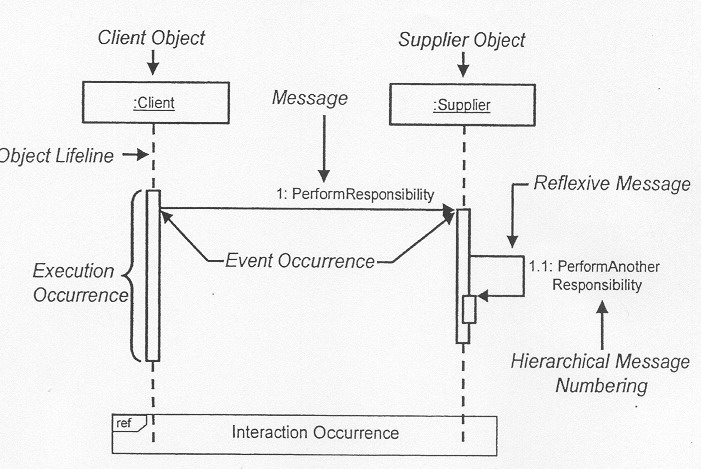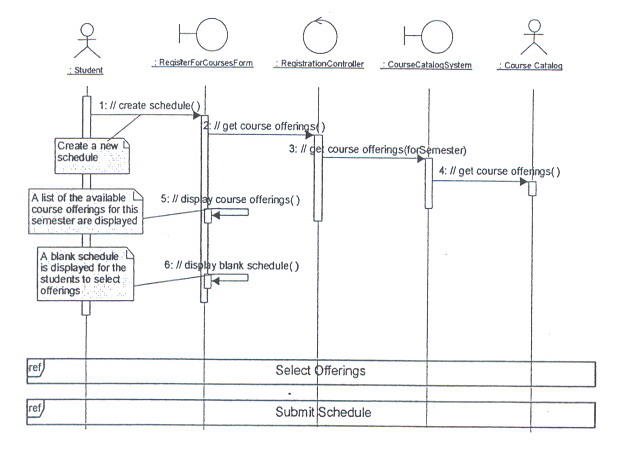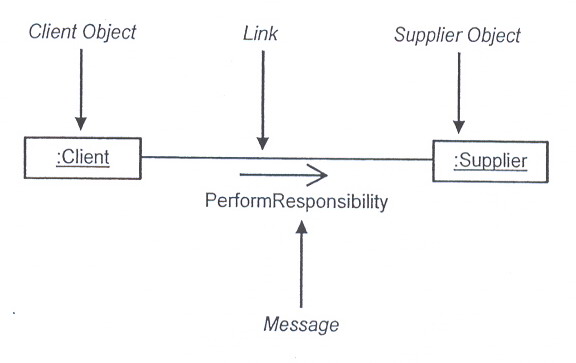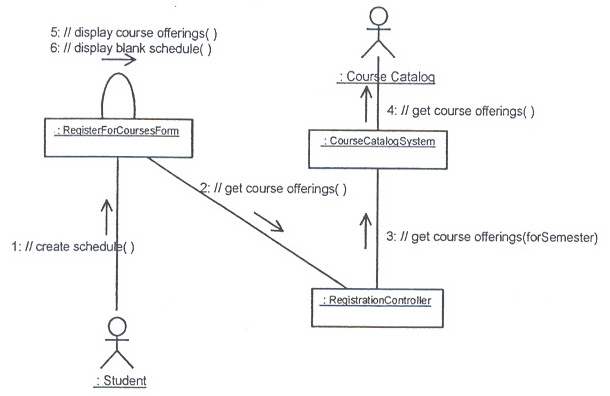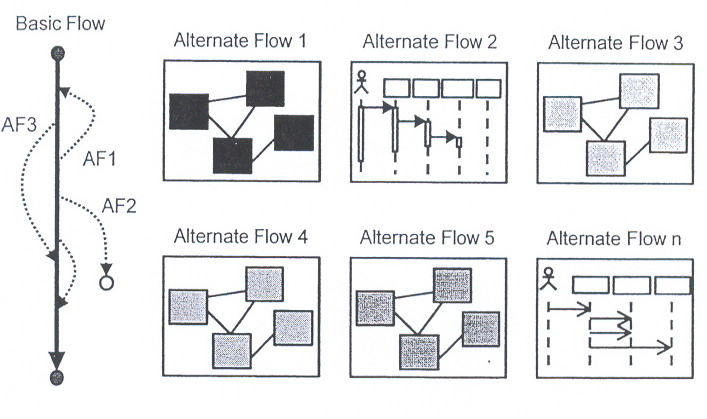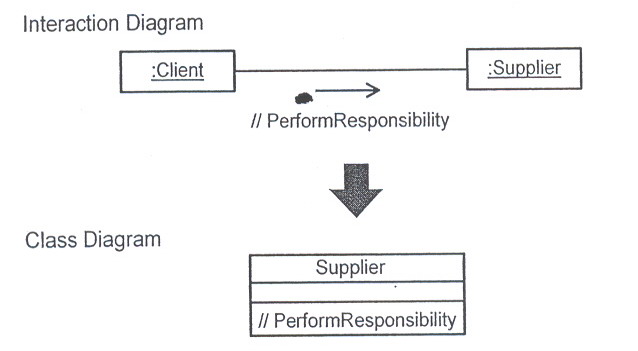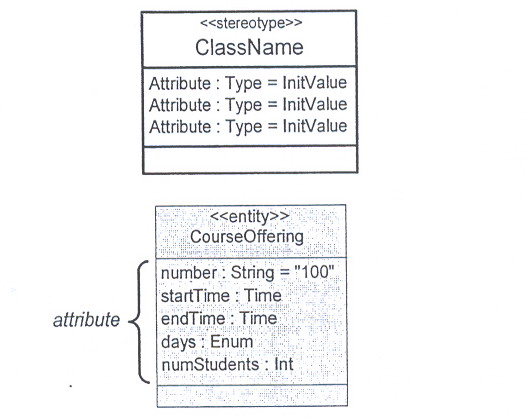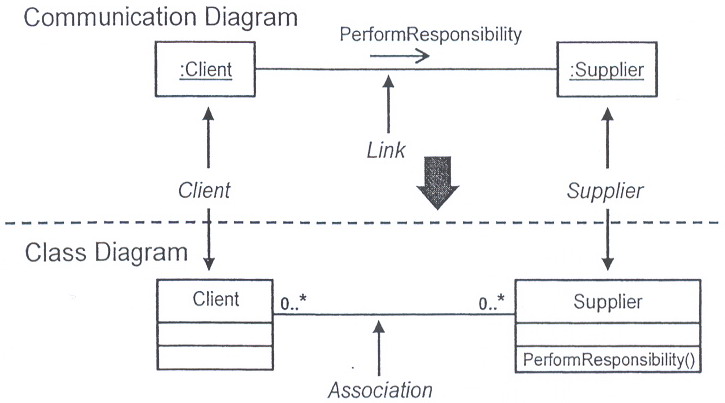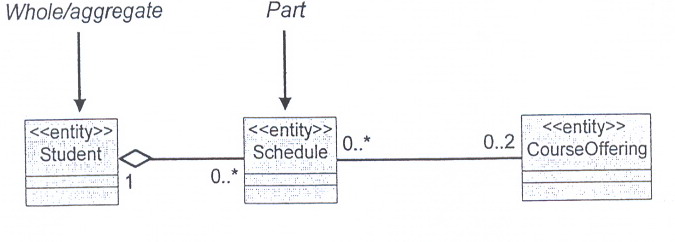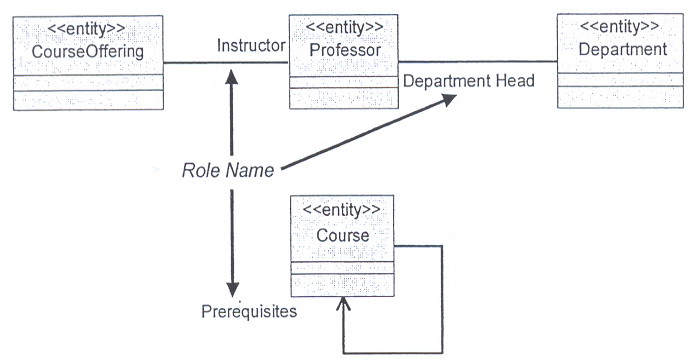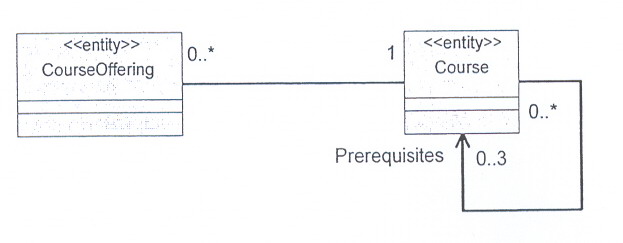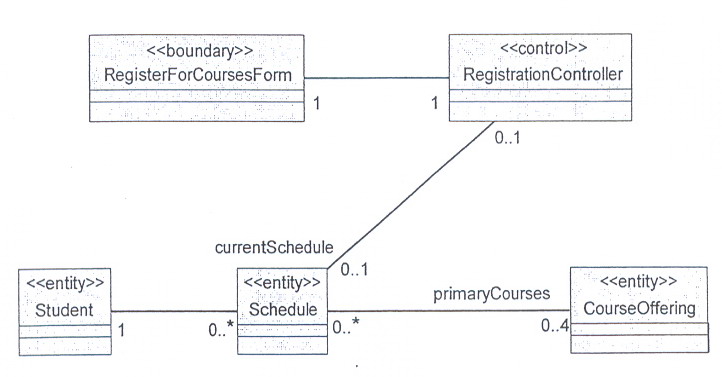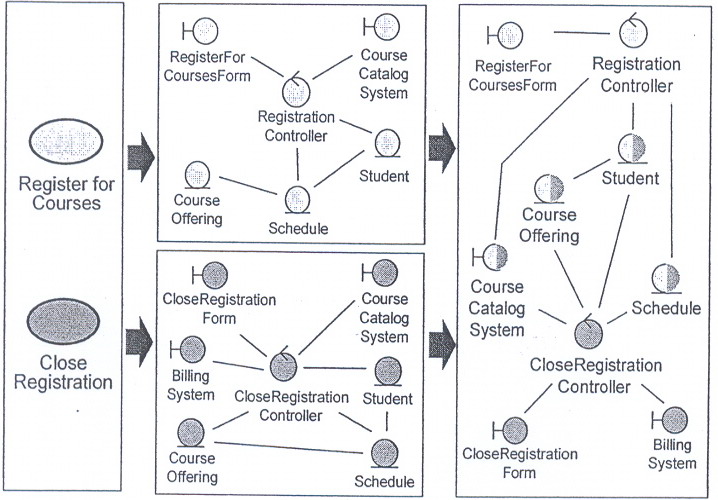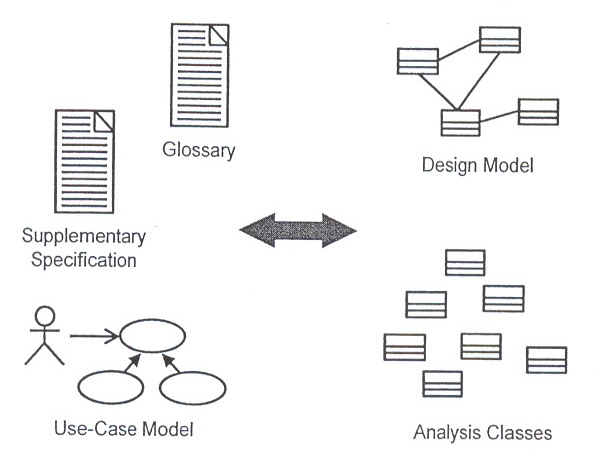For each use-case flow of events:
-
Identify analysis classes
-
Allocate use-case responsibilities to analysis classes
-
Model analysis class interactions in Interaction diagrams
-
In addition to the identified analysis classes, the Interaction diagram should show interactions of the system with its actors. The interactions should begin with an actor, since an actor always invokes the use case. If you have several actor instances in the same diagram, try keeping them in the periphery of that diagram.
-
Interactions between actors should not be modeled. By definition, actors are external, and are out of scope of the system being developed. Thus, you do not include interactions between actors in your system model. If you need to model interactions between entities that are external to the system that you are developing (for example, the interactions between a customer and an order agent for an order-processing system), those interactions are best included in a Business Model that drives the System Model.
-
Guidelines: Allocating Responsibilities to Classes
-
Use analysis class stereotypes as a guide:
-
Boundary Classes: Behavior that involves communication with an actor
-
Entity Classes: Behavior that involves the data encapsulated within the abstraction
-
Control Classes: Behavior specific to a use case or part of a very important flow of events
-
-
Who has the data needed to perform the responsibility?
-
If one class has the data, put the responsibility with the data:
-
If multiple classes have the data:
-
put the responsibility with one class and add a relationship to the other
-
Create a new class, put the responsibility in the new class, and add relationships to classes needed to perform the responsibility
-
Put the responsibility in the control class, and add relationships to classes needed to perform the responsibility
-
-
-
Be careful when adding relationships °– all relationships should be consistent with the abstractions they connect. Do not just add relationships to support the implementation without considering the overall effect on the model.
-
When a new behavior is identified, check to see if there is an existing class that has similar responsibilities, reusing classes where possible, you should create new classes only when you are sure that there is no existing object that can perform the behavior.
The Anatomy of Sequence Diagrams:
-
A sequence diagram describes a pattern of interaction among object, arranged in a chronological order. It shows the objects participating in the interaction and the message they send.
-
Hierarchical numbering bases all message on a dependent message.
-
Notes: describe the flow of events textually.
Example: Sequence Diagram
-
The object interactions to support the Create a Schedule sub-flow of the Register for Courses use case.
The Anatomy of Communication Diagrams:
-
A communication diagram describes a pattern of interaction among objects. It shows the objects participating in the interaction by their links to each other and the messages that they send to each other.
-
An object is represented in one of three ways:
-
Objectname: Classname
-
ObjectName
-
:ClassName
-
-
The arrow may also be labeled with a sequence number to show the sequence of the message in the overall interaction.
-
A message can be unassigned, meaning that its name is a temporary string that describes the overall meaning of the message. You can later assign the message by specifying the operation of the message's destination object. The specified operation will then replace the name of the message.
Example: Communication Diagram
